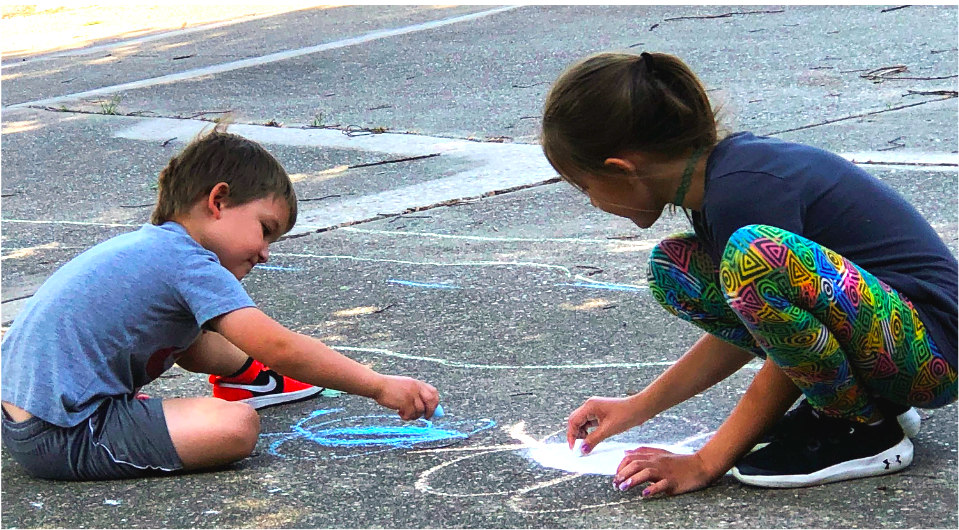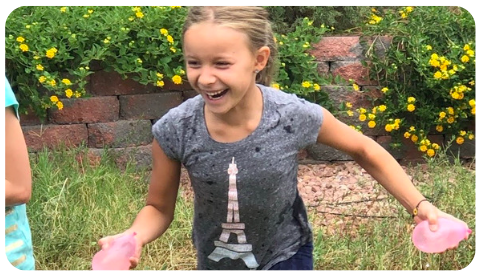Written by: Shelley Kress / Award-Winning Las Vegas Teacher
Many teachers have a quote posted somewhere in their classroom, Tell Me and I Forget, Teach Me and I Remember – Involve Me and I Learn. The truth in that phrase is obvious and important. The best way for a child or student to learn is by doing. The best way to do this, for young children, is through play. When children can learn through purposeful play, it activates their learning and allows them to find more accountability in their learning. What they learn will forever be connected to that play experience.
These are some ideas for incorporating learning into everyday play experiences:
Play-Doh/Clay
While playing with Play-Doh or clay, direct children to form shapes, letters, or numbers! Children can also put letters together to form simple words or combine numbers to become familiar with place values (tens column, ones column).
Bubbles
You can activate gross motor skills when children are really young by simply popping bubbles. Children can also use different body parts to pop bubbles. Then, introduce counting the bubbles as they get older. They can count each bubble as they pop it or make a goal to pop more bubbles each time!

Sidewalk Chalk
While playing with sidewalk chalk, encourage children to practice their handwriting, spell out sight words, write their name, or practice their letters! They can also write simple math equations – adding and subtracting – and draw out their strategies!
Money
Play store or restaurant and use play money. Practice counting change, add up simple purchases, and help children become familiar with coins, dollar bills, and the concept of paying for goods and services.
Manipulatives
You can turn anything into a manipulative to count (stuffed animals, bean bags, crayons, toys). You can also group these into the same number groups to start practicing skip counting. For example, separate into groups of two (2, 4, 6, 8).
Building Blocks
Children can create structures with building blocks (wooden blocks, magnetic shapes, Picasso Tiles, Legos). While building these structures, incorporate the concept of cause and effect. For instance, if a larger tile is placed on a smaller tile, it won’t be solid – it will collapse because it’s not strong enough. The concept of problem and solution can also be built into these play experiences. Children can begin recognizing that their structure is not solid and figure out how to fix it.
Balloons
Playing with water and air balloons incorporates manipulative and gross motor skills throughout the activity – catching, throwing, stepping, and running. Younger children can also work on identifying colors, grouping sizes, counting, setting goals (how far do you want to throw the balloon), and cause and effect (sitting on the balloon will cause it to pop).

Chalk Boards/White Boards
Using either chalkboard or whiteboards, children can be engaged in the same type of activities as the sidewalk chalk. The act of writing with another medium (beyond pencils, markers, and crayons) is exciting and adds a new dynamic to the play. Again, encourage children to practice words, numbers, and letters. You can also encourage children to draw and create scenes to motivate creativity and artistry.
Car Rides
Even on short car rides, you can make a game of searching for letters on signs, license plates, or buildings. In younger children, simply look to recognize the letters, and as children get older, look for patterns of letters (two R’s, two E’s) and then eventually look for recognizable sight words (in, the). Do the same with numbers – start becoming familiar with recognizing numbers, incorporate bigger numbers, and develop more number sense and fluency.
Telling Time
Using both an analog and a digital clock, start discussions about time. Incorporate skip counting by 5 for the analog clocks. Using the digital clocks, work on counting up to figure out how much time is remaining before something occurs (build into excitement for an activity, too – we’re leaving in 15 min! What time will it be then?) For both types of clocks, incorporate simple elapsed time, the concept of the twelve hours, and the design of each clock (minute hands, hour hands, the number that represents the hour and minute).
